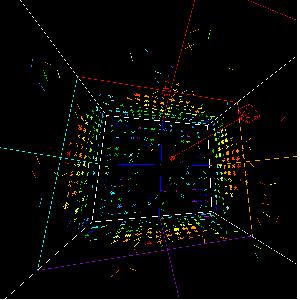Belle Dumas, Physicsweb, (translation: Dikla Oren)

Direct link to this page: https://www.hayadan.org.il/muons2.html
An international team of physicists has reported what it described as the largest discrepancy to date between theory and experimental results in particle physics. Measurements of the motion of muons (particles similar to but heavier than electrons, d.a.) in a magnetic field offer the greatest clues about physics beyond the standard model of particle physics. The g-2 ion collaboration at Brookhaven National Laboratory in the US announced the findings today.
The g-2 muon experiment measures the "g factor" that links the spin of the muon, a particle 208 times heavier than the electron, to its magnetic moment. Simple quantum theories predict that g=2 for particles like the electron and the muon. However, radiation corrections, which result from the constant emission and absorption of short-lived virtual particles, mean that g is not exactly equal to 2.
The origin of these corrections may be in the Standard Model particles or in more exotic particles, which are not included in the Standard Model. Examining the differences between theory and experimental results is therefore a good way to look for physics beyond the standard model. The leading candidate for physics beyond the standard model is supersymmetry, a theory that predicts that for every particle in the standard model there is a corresponding supersymmetric particle.
The Brookhaven experiment already measured such differences in g-2 values in positive muons, and these measurements were further validated by the first measurements of g-2 in negative muons. The last measurement, which matches the attached precision of the previous measurements, differs from theory by 2.9 standard deviations. Combining all three measurements gives rise to a difference of 2.8 standard deviations between theory and experiment.
"The fact that our measurement continues to deviate from theory may be an indication of the discovery of new physics beyond the Standard Model," said Boston University's Lee Roberts, a spokesman for the experiment. "Our experiment now reaches a precision fourteen times greater than the first measurements of muon g in experiments conducted at CERN in the 1970s - and this precision places important constraints on possible new theories."
"The latest g-2 results strengthen the case for the effects of new physics, with supersymmetry being a leading candidate, but are by no means conclusive," says William Marciano, a theoretical physicist at Brookhaven. "A careful examination of the theory and the continuation of the experiment are necessary steps."
The muon g-2 team, which includes physicists from the US, Russia, Japan, the Netherlands and Germany, submitted its findings to Physical Review Letters.
Link to the original article on Physicsweb
Physics expert
https://www.hayadan.org.il/BuildaGate4/general2/data_card.php?Cat=~~~733415545~~~95&SiteName=hayadan
